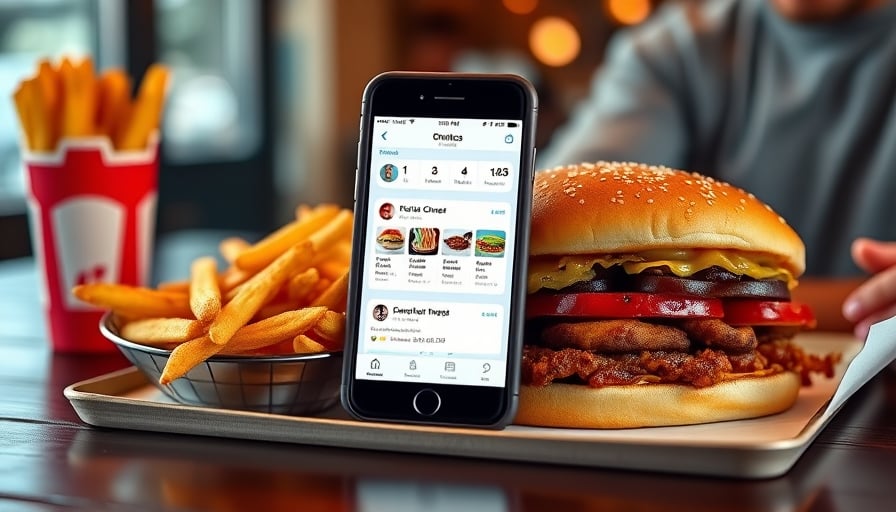McDonald’s Corp. Maintains Market Stability Amid Evolving Consumer Dynamics
McDonald’s Corp., the New York Stock Exchange‑listed global fast‑food operator, continues to command a leading position within the consumer discretionary sector. Recent market coverage has largely emphasized the company’s share performance rather than new operational announcements. Analysts observe that the stock has traded near its recent highs, mirroring a broadly positive sentiment among investors. No fresh corporate releases or earnings updates have emerged in the latest reporting cycle, and the firm’s key financial metrics—including its price‑earnings ratio—remain within a range that is typical for peer companies in the industry. Consequently, the market outlook for McDonald’s remains neutral, with investors monitoring forthcoming developments that could shape its valuation trajectory.
The Intersection of Digital Transformation and Physical Retail
McDonald’s has historically leveraged its expansive physical footprint to drive sales, but contemporary consumer behaviors increasingly demand seamless integration of digital channels. The rise of mobile ordering, delivery partnerships, and data‑driven personalization offers a fertile ground for revenue diversification. By deploying an omnichannel strategy that blends in‑store experiences with robust digital interfaces, McDonald’s can capture the attention of time‑constrained, tech‑savvy shoppers while retaining its legacy customer base.
Mobile Ordering and Loyalty Programs The company’s “MyMcDonald’s” app has grown to over 30 million users in the United States, generating significant repeat‑visit traffic. Enhancing the app with predictive analytics—such as menu recommendations based on past orders—could deepen engagement and increase average order value.
Delivery Ecosystem Partnerships with third‑party delivery services and the company’s own “McDelivery” platform are expanding into new markets. Optimizing last‑mile logistics through AI‑based route planning can reduce delivery times, a critical metric for customer satisfaction.
In‑Store Digital Touchpoints Self‑service kiosks, digital menu boards, and QR‑code‑enabled ordering are already standard in many outlets. Future iterations might include augmented reality (AR) features that allow customers to visualize menu items, thereby enhancing the experiential dimension of the visit.
These initiatives exemplify the broader trend of “physical‑digital convergence,” wherein traditional brick‑and‑mortar retailers are compelled to adopt technology to remain competitive.
Generational Spending Patterns and Demographic Shifts
Consumer preferences differ markedly across generational cohorts, creating distinct opportunities for menu innovation and marketing. The current cohort of Millennials (born 1981–1996) and Generation Z (born 1997–2012) represent the largest share of McDonald’s customer base, but older generations still contribute a substantial portion of revenue.
| Generation | Core Preferences | Implications for McDonald’s |
|---|---|---|
| Millennials | Health‑conscious, ethical sourcing, value for money | Introduce plant‑based options, highlight supply‑chain transparency |
| Gen Z | Experience‑driven, social media engagement, sustainability | Expand social‑media‑ready menu items, promote eco‑friendly packaging |
| Baby Boomers | Familiarity, convenience, straightforward pricing | Maintain classic menu staples, emphasize ease of order |
The growing emphasis on sustainability—driven by younger consumers—offers a pathway for McDonald’s to differentiate its brand through initiatives such as compostable packaging, plant‑based menu items, and carbon‑neutral supply chains. By aligning product development with these demographic priorities, the company can not only retain loyalty but also attract new customers in the form of “conscious consumers.”
Evolution of Consumer Experiences
Modern consumers are increasingly seeking “experience‑rich” interactions with brands. This shift manifests in several ways:
Immersive Store Design Incorporating local cultural elements into interior décor can create a sense of place and community, encouraging dwell time and repeat visits.
Personalized Marketing Leveraging customer data to tailor promotions—such as time‑based discounts for habitual patrons—enhances perceived value and drives conversion.
Social Proof and User‑Generated Content Encouraging patrons to share their meals on social media platforms, coupled with branded hashtags, amplifies word‑of‑mouth marketing and extends brand reach.
Convenience as a Lifestyle Positioning McDonald’s as a “quick stop” that aligns with busy urban lifestyles—through express counters, drive‑through kiosks, and pre‑ordered mobile pickup—caters to time‑pressed consumers.
The convergence of these experiential elements with digital innovation creates a compelling proposition for a broad spectrum of consumers, reinforcing McDonald’s relevance in a rapidly evolving marketplace.
Forward‑Looking Market Opportunities
Given the current stability of McDonald’s stock and the broader trends outlined above, several strategic avenues present themselves:
- Accelerated Digital Adoption: Continued investment in AI‑driven personalization and mobile‑first experiences can translate into higher average transaction values and increased customer lifetime value.
- Sustainable Supply Chain Initiatives: Transitioning to renewable energy sources for franchise operations and partnering with local, sustainably sourced suppliers could reduce operating costs and enhance brand equity.
- Global Market Penetration: Emerging markets—particularly in Southeast Asia and Latin America—offer significant growth potential. Tailoring menu offerings to regional tastes while maintaining global brand standards can drive expansion.
- Data‑Driven Store Optimization: Deploying IoT sensors and predictive analytics to manage inventory, reduce waste, and improve staffing efficiency can lower costs and improve service quality.
Investors and industry observers should monitor McDonald’s progress in executing these initiatives. Successful integration of digital and experiential strategies, combined with a responsive approach to demographic and lifestyle shifts, will likely sustain the company’s competitive edge and potentially lift its valuation beyond current market levels.




